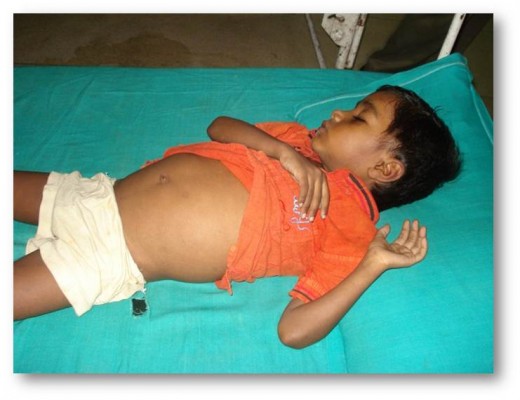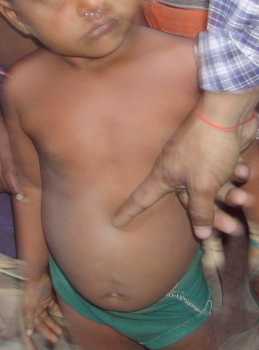Health Importance Of The Treatment Of Visceral Leishmaniasis (Kala-azar)
Kala Azar Alleviation Initiative In India

Treatment of Visceral Leishmaniasis
Suspected cases should be hospitalized. Nutritional supplements, maintenance of oral hygiene and treatment of secondary infection from the general treatment.
Specific drugs: Two groups of drugs are available- pentavalent antimonials are used more often but they are contrainidicated in patients with coexistent tuberculosis. Aromatic diamidines are preferable in resistant cases and those with coexistent tuberculosis. Jaundice, renal disease, and hemorrhages are contraindications for aromatic diamidines.
Though several antimonial compounds have been introduced from time to time, sodium stibogluconate and methyl glucamine antimoniate (Glucantime) are the drugs most commonly available and used now. Among the aromatic diamidines pentamidine is available in most of the African countries and India and used more. Hydroxystilbamidine is more effective, but it is not freely available.
Sodium stibogluconate (Solustibosan, Stibatin, Pentostam) is available for instramuscular injection containing 100 mg of antimony/ml. The drug is started with an initial dose of 5 mg/Kg body weight and followed by subsequent larger doses 10 to 15 mg/Kg body weight daily for 6 to 10 days to reach a total dose of 3.6 to 4g for an adult. Children are given only up to 300 mg/day and infants 200mg. The ten day course is repeated thrice with an interval of ten days in between. The drug does not produce cumulative toxicity.
Effects Of Visceral Leishmaniasis Treatment

Infectious Diseases
Adverse Effects Of Treatment Of Visceral Leishmaniasis
Adverse side effects include sudden death, cough, chest pain, abdominal colic, pain in the arms, vomiting, faintness and collapse. Hypersensitivity reactions may develop after the sixth or seventh injection. Adrenaline should be available at hand to control them.
Delayed hypersensitivity reaction leads to fever, arthralgia and vague illhealth. Serious toxic effects may be evident in the heart and liver. Cardiac involvement manifests as reversible ECG changes, hypotension and bradycardia. In those with pre-existing liver disease, hepatic failure may develop.
Methyl glucamine antimoniate (Glucantime): The intitial dose is 5 ml for adults and 3 ml for children and infants. Subsequent doses are 15 ml for adults and 5 to 10 ml for infants and children. The injections are given intramuscularly on alternate days for a total course of 15 injections. Longest courses are necessary in resistant cases.
Pentamidine is available for intramuscular or intravenous injection in a maximum daily dose of 3 to 4 mg/Kg body weight. This full dose is reached after one or two smaller initial doses. Intravenous injections are given slowly after diluting the drug in 25 ml of 25% glucose in a syringe. For intramuscular injections, 10% solution in distilled water is used. Injections are given for fresh cases. This full course may be repeated at intervals of two weeks depending on the response. Adverse side effects include sudden hypotension and hypoglycemia. Hypotension can be corrected by hypodermic injection of 0.5ml adrenaline solution. Temporary diabetic state may follow a course of pentamidine. Local reaction at the site of injection may lead to fibrosis.
Hydrpxystibamidine is best administered intravenously, slowly in a dose of 3 mg/Kg dissolved in 25 ml of 25% glucose. Initial doses have to be smaller. The total course is the same as for pentamidine.
Effects Of Treatment Of Visceral leishmaniasis
Fever comes down with one or two courses and the patient improves. The spleen returns to normal in 3 weeks of treatment. Anemia and leucopenia also improve. All patients who achieve cure should be observed for at least six months to detect relapse early. After this period, they may be considered cured. Drug resistant Kala-azar may respond to amphotericin B in the usual dosage.
© 2014 Funom Theophilus Makama









